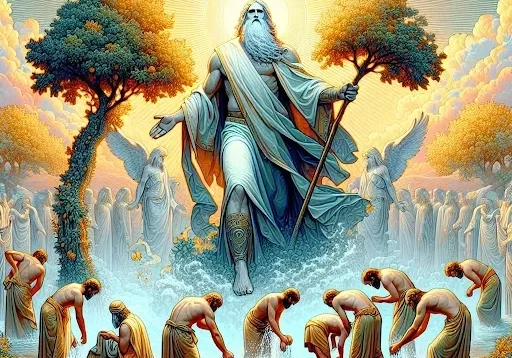Legacy: What happened to Jesus Christ’s disciples after resurrection and ascension?

SHARE
Following the resurrection and ascension of Jesus Christ, his disciples found themselves at the forefront of a movement that would reshape the course of history. Their experiences, trials, and unwavering commitment to spreading the message of their risen Lord laid the foundation for the growth of Christianity across the ancient world. Here’s a glimpse into what happened to Jesus Christ’s disciples after his ascension.
The Great Commission: Before his ascension, Jesus commissioned his disciples, instructing them to “go and make disciples of all nations” (Matthew 28:19). This command propelled the disciples into action, emboldening them to spread the Gospel far and wide. They traveled extensively, preaching, teaching, and performing miracles, all while facing persecution and opposition.
Peter: Known for his impulsive nature, Peter emerged as a prominent leader among the disciples. He played a pivotal role in the early Christian community, preaching boldly and performing miracles. Tradition holds that Peter traveled to Rome, where he was eventually martyred, crucified upside down at his own request, as he believed himself unworthy to die in the same manner as Jesus.
James, son of Zebedee: James, the brother of John, was one of Jesus’ inner circle, witnessing significant events like the Transfiguration. He became a prominent figure in the early church and was the first of the apostles to be martyred, killed by Herod Agrippa I around AD 44.
John: Often referred to as the “beloved disciple,” John played a crucial role in the spread of Christianity. He authored several books of the New Testament, including the Gospel of John, the three Epistles of John, and the Book of Revelation. Despite facing persecution and exile, John continued to minister faithfully, leaving behind a profound theological legacy.
Andrew: Peter’s brother, he is believed to have traveled extensively, preaching the Gospel in regions such as Greece and Asia Minor. He was martyred in Patras, Greece, where tradition holds that he was crucified on an X-shaped cross, now known as the St. Andrew’s Cross.
Philip: Philip’s ministry took him to various regions, including Samaria and Ethiopia, where he baptized the Ethiopian eunuch. He was known for his fervent evangelism and was eventually martyred, possibly in Hierapolis, Phrygia.
Thomas: Often remembered as “Doubting Thomas,” he is believed to have traveled to India, where he established a Christian community. Though little is known about his later life, tradition holds that he was martyred by spearing in India.
Matthew: A former tax collector, Matthew authored the Gospel that bears his name. He is said to have ministered in Judea or Ethiopia before his martyrdom, though historical accounts vary.
Judas Iscariot’s Replacement: After Judas betrayed Jesus and took his own life, Matthias was chosen to replace him as one of the twelve apostles. Little is known about his ministry, but tradition suggests he preached in Ethiopia before being martyred.
The Other Disciples: While the aforementioned disciples played significant roles in the early church, others such as Bartholomew, James the son of Alphaeus, Simon the Zealot, and Thaddaeus also contributed to the spread of Christianity, though historical records of their specific activities are limited.
Despite facing persecution, imprisonment, and martyrdom, the disciples remained steadfast in their faith, fueled by the conviction that Jesus was the Son of God and the Savior of the world.
*Cover Photo/Thumbnail Photo: Freepik
RELATED ARTICLES

The Sacrificial Shepherd, Abel

Heaven’s Boring? Bible’s Vision of Work and Joy Gives Eternity Meaning

Welcome the New Year in grand Peninsula style

The Jews in the Holocaust








